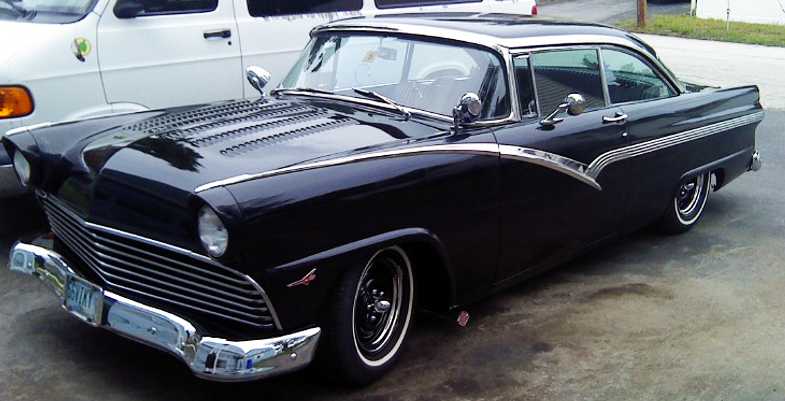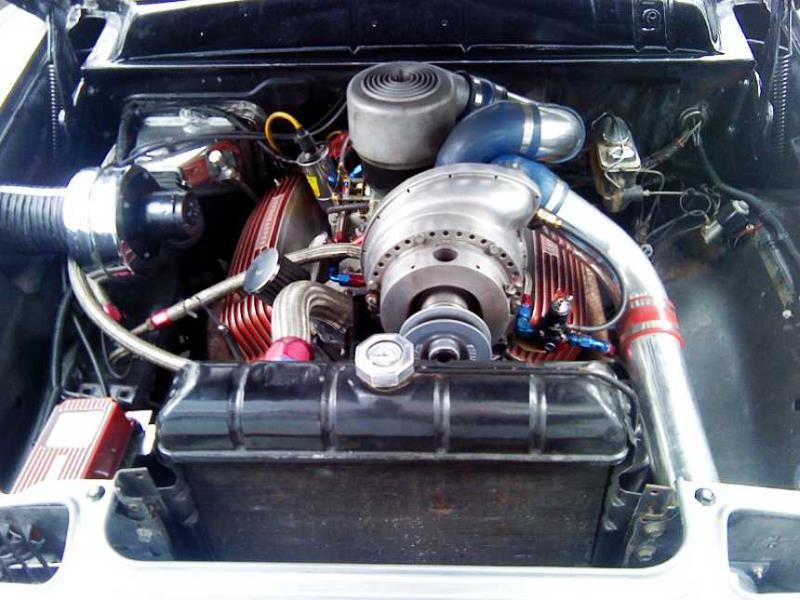|
Author
|
Message
|
|
57RancheroJim
|
|
|
Group: Forum Members
Last Active: Last Year
Posts: 729,
Visits: 112.0K
|
Wear on the backing plates could be a possibility as you mentioned but you said the wheels turn fine after applying pressure and releasing so it doesn't sound like the shoes are hanging up. I'm not sure if there would be more heating if the primary shoes and secondary were on in reverse? Just a wild guess but could it be possible that the rear brakes are working fine and trying to do the most of stopping because the fronts aren't working properly?
|
|
|
|
|
2721955meteor
|
|
|
Group: Forum Members
Last Active: Last Year
Posts: 927,
Visits: 190.0K
|
wheel cylenders could be sticking. had that isue with my ranchero,replaced bothe the fronts, had to drive them apart with hamer and punch, the worked but never quit draging.
|
|
|
|
|
peeeot
|
|
|
Group: Forum Members
Last Active: Last Year
Posts: 357,
Visits: 25.5K
|
I took the driver rear brake back apart and though there is some wear on the backing plate pad, I really don't think it's enough to cause a problem. I actuated the brake with the drum off and watched the shoes expand and return. It appeared to me that as long as the range of motion was small the shoes would always return. They did not snap back into place; when the pedal was released they returned steadily over about a second or so. I flushed and bled the brake line and adjusted the brake according to the shop manual.When I was done I could hear some contact with the drum but the wheel spun freely. Apparently the adjustment has not been my problem though. I verified that the wheel cylinder was 7/8 ID and that the pistons both moved freely. There was a LOT of brake dust in the drum on the driver side and a normal amount on the passenger side. That was surprising because both sides get hot. I haven't finished checking out the passenger side yet though.
I will be checking the fronts too as I get time, perhaps there is indeed a problem up there forcing the rears to take up more than their share of the stopping duty.
1954 Crestline Victoria 312 4-bbl, 3-speed overdrive
|
|
|
|
|
PF Arcand
|
|
|
Group: Forum Members
Last Active: Last Year
Posts: 3.3K,
Visits: 238.8K
|
Your problem is perplexing? Grabbing at straws here.. but you say the rear brakes are overheating, so is it possible your rear axle fluid is to low & the wheel bearings and so on are overheating?..
Paul
|
|
|
|
|
57RancheroJim
|
|
|
Group: Forum Members
Last Active: Last Year
Posts: 729,
Visits: 112.0K
|
Brakes not snapping back is normal, the wheel cylinders are trying to push all the fluid back into the master cylinder. They can't do that at the same speed as the master cylinder piston is released, thats why there is two holes in the master reservoir, the small one compensates for this. BLA BLA BLA, I'm sure you know that...
|
|
|
|
|
Ted
|
|
|
Group: Administrators
Last Active: 6 hours ago
Posts: 7.5K,
Visits: 205.8K
|
There’s a good chance the springs are simply not pulling the shoes and wheel cylinders back as they should. As a general rule, brake springs are typically only good for ten years and then should be replaced. Brake spring kits are readily available for most applications.
  Lorena, Texas (South of Waco) Lorena, Texas (South of Waco)
|
|
|
|
|
peeeot
|
|
|
Group: Forum Members
Last Active: Last Year
Posts: 357,
Visits: 25.5K
|
PF, that's a good thought. I figured if the wheel bearings were bad I would hear it/feel it in some way other than the heat. Then there's the fact that the drum itself gets very hot, not the brake backing plate, and all that brake dust on the driver side. Next time I drive I will check the axle tube for heat in the area of the bearings.
Ted, springs are cheap, I'll look into replacements. I know that when self-energizing brakes apply the "servo action" uses the primary shoe to increase the application force on the rear shoe. Maybe the springs aren't pulling the primary shoe off with enough gusto after actual braking and I have been unable to observe it since I can only check for shoe release when the car is already stopped.
I feel like I'm grabbing at straws too! Just have to be more stubborn than the problem...
1954 Crestline Victoria 312 4-bbl, 3-speed overdrive
|
|
|
|
|
peeeot
|
|
|
Group: Forum Members
Last Active: Last Year
Posts: 357,
Visits: 25.5K
|
I contacted Charlie of charlietranny.com about the torque converter slippage. He said that 5-10% slip is considered normal, so the 8-9% I'm seeing at highway speeds is normal and therefore it seems unlikely that my transmission is what's eating up my MPGs.
1954 Crestline Victoria 312 4-bbl, 3-speed overdrive
|
|
|
|
|
57RancheroJim
|
|
|
Group: Forum Members
Last Active: Last Year
Posts: 729,
Visits: 112.0K
|
It will be interesting to see what you find in the end. I think we are running out of guesses..
If all the heat is being generated on the driver side, is the passenger side not working properly causing the problem?
Can you brake hard enough to see that both lock up?
|
|
|
|
|
MoonShadow
|
|
|
Group: Forum Members
Last Active: 2 hours ago
Posts: 4.6K,
Visits: 38.4K
|
I had a problem with one caliper dragging on my Dodge van. I followed some advice on digging in to it and was told to jack up the vehicle and find the wheel(s) that seems to be dragging. Open the bleeder screw until a little fluid comes out then check to see if the wheel turns easier. Problem turned out to be a bad rubber brake hose. Apparently they can develop loose tabs of rubber inside that act like a flapper valve and don't allow the brake shoes to retract fully. Worked for me. Chuck
Y's guys rule!
Looking for McCullouch VS57 brackets and parts. Also looking for 28 Chrysler series 72 parts. And early Hemi parts.
 
MoonShadow, 292 w/McCulloch, 28 Chrysler Roadster, 354 Hemi)
Manchester, New Hampshire
|
|
|
|